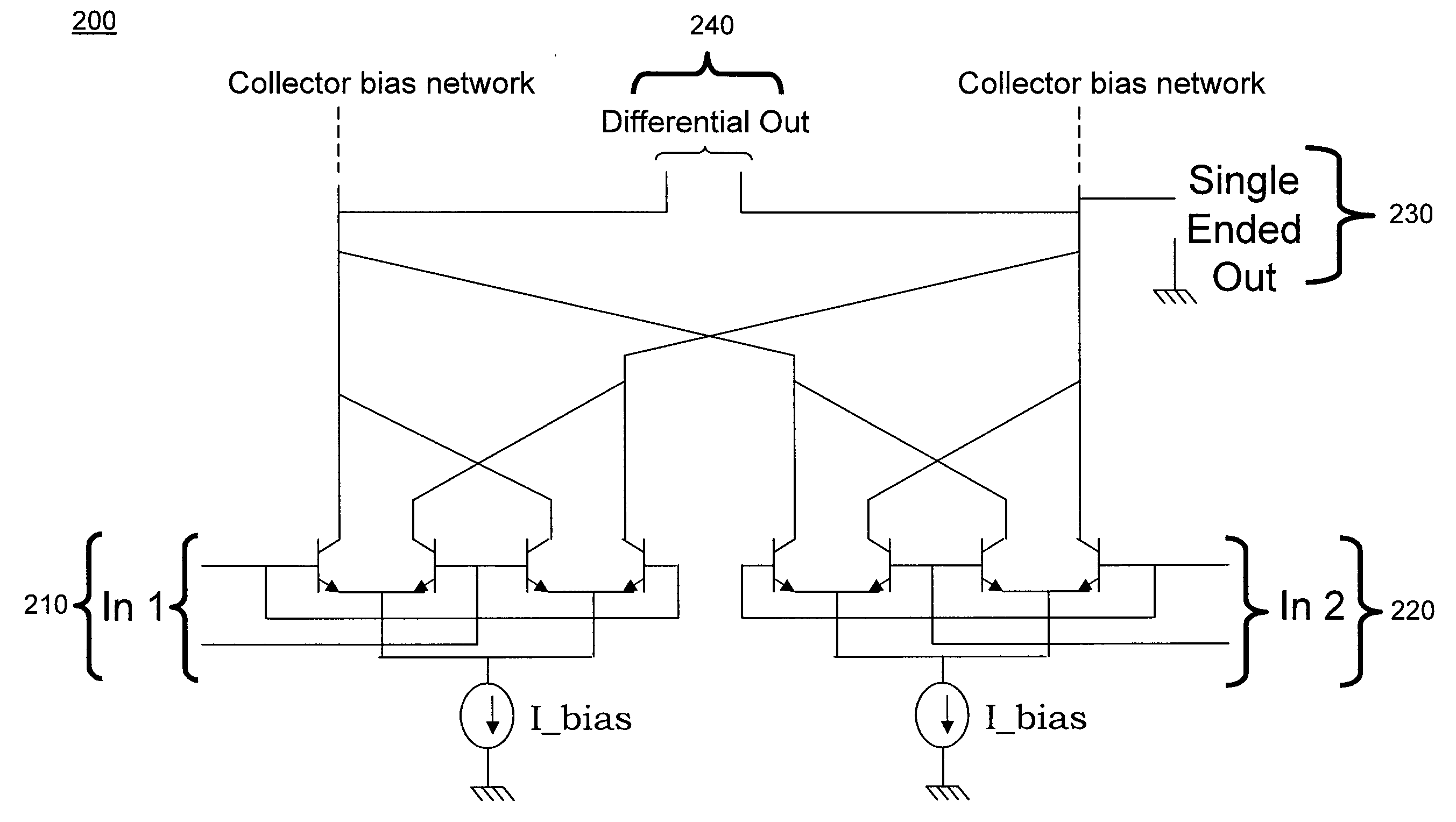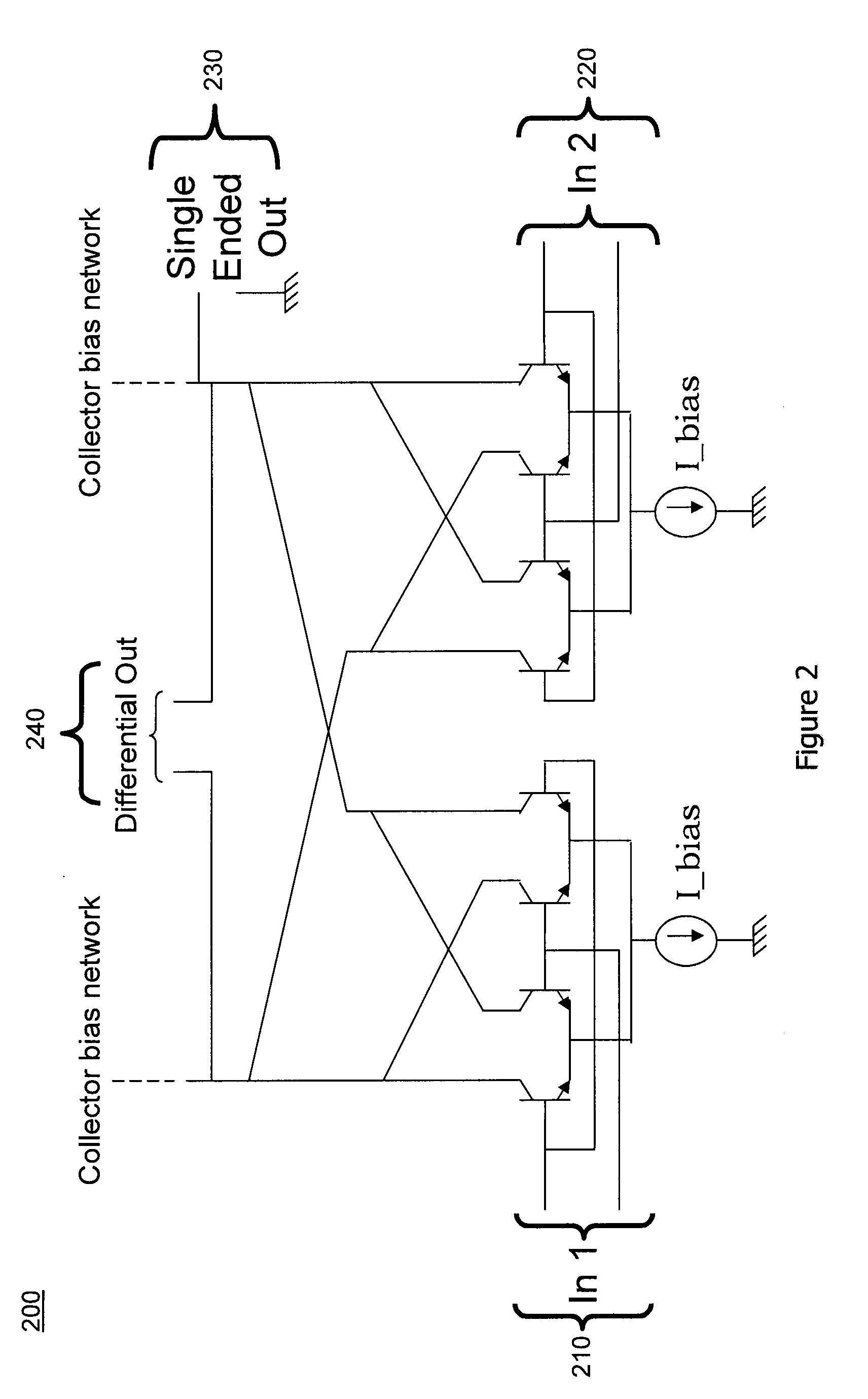Active hybrids for antenna systems
a hybrid and antenna technology, applied in the field of active hybrids for antenna systems, can solve the problems of increasing system size, weight, cost and complexity, quadrature hybrids and 180° hybrids are limited in frequency bands, and require significant physical space, so as to achieve ultra-compact size and broadband performance, reduce cost, and reduce the effect of physical siz
- Summary
- Abstract
- Description
- Claims
- Application Information
AI Technical Summary
Benefits of technology
Problems solved by technology
Method used
Image
Examples
Embodiment Construction
[0021]While exemplary embodiments are described herein in sufficient detail to enable those skilled in the art to practice the invention, it should be understood that other embodiments may be realized and that logical material, electrical, and mechanical changes may be made without departing from the spirit and scope of the invention. Thus, the following detailed description is presented for purposes of illustration only.
[0022]In an exemplary embodiment, an active hybrid has various designs and is comprised of various components. The active hybrid may perform the functions of different passive hybrids, such as a branchline hybrid, a magic tee hybrid, or a passive quadrature hybrid. Regardless, the various components of the active hybrid may include a vector generator, an active power splitter, an active power combiner, or the like. Furthermore, the embodiments described in this application may include passive components in place of the active components so long as at least one activ...
PUM
 Login to View More
Login to View More Abstract
Description
Claims
Application Information
 Login to View More
Login to View More - R&D
- Intellectual Property
- Life Sciences
- Materials
- Tech Scout
- Unparalleled Data Quality
- Higher Quality Content
- 60% Fewer Hallucinations
Browse by: Latest US Patents, China's latest patents, Technical Efficacy Thesaurus, Application Domain, Technology Topic, Popular Technical Reports.
© 2025 PatSnap. All rights reserved.Legal|Privacy policy|Modern Slavery Act Transparency Statement|Sitemap|About US| Contact US: help@patsnap.com



